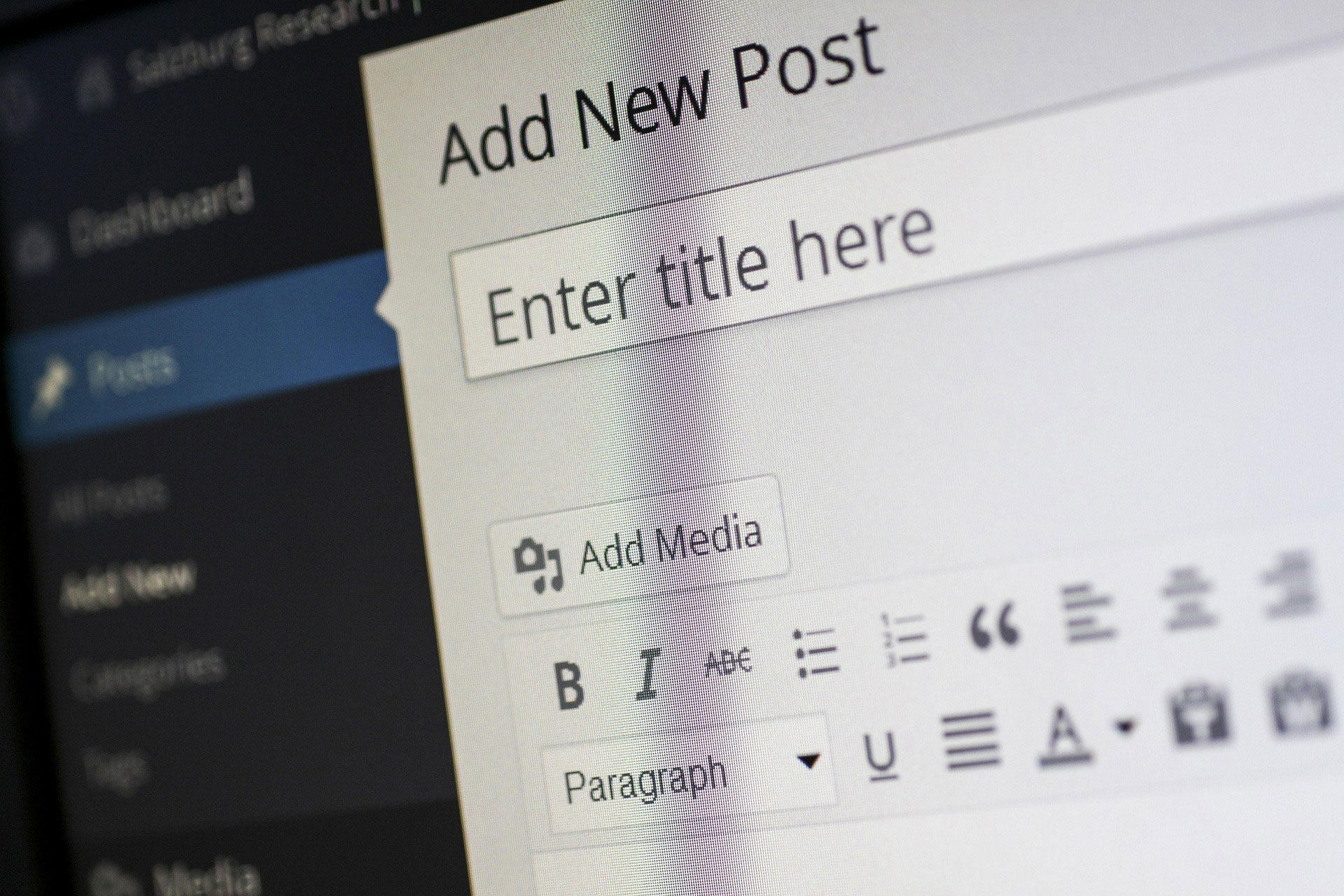WordPress is one of the most popular platforms for blogging — in fact, it was originally designed with blogging in mind. That means setting up your own blog is quick, flexible, and doesn’t require coding knowledge.
In this guide, we’ll walk you through how to create a blog in WordPress, from setting up your first post to organising categories and menus.
Step 1: Add Your First Blog Post
By default, WordPress makes it easy to get started:
- Log in to your WordPress dashboard.
- Go to Posts > Add New.
- Enter your blog title and content.
- Add a featured image (this will often display in previews on your site and social media).
- Click Publish to make your post live.


Step 2: Decide Where You Want Your Blog to Appear
Not every website owner wants their blog on the homepage. Many prefer a static homepage (e.g., an “About Us” or services page) and a separate page just for blog posts.
To do this:
- Go to Pages > Add New and create a new page called “Blog” (or another name of your choice).
- Then go to Settings > Reading.
- Set your Homepage to the page you want as your main landing page.
- Set your Posts page to the “Blog” page you just created.
Now all of your blog posts will automatically appear on that page.

Step 3: Use Categories to Organise Your Content
If you’re planning to publish regularly, categories help keep your content organised and easy to navigate.
For example:
- A company blog might have categories like News, Events, and Case Studies.
- A lifestyle blog might use Food, Travel, and Fitness.
To add categories to your site navigation:
- Go to Appearance > Menus.
- If you don’t see “Post Categories” listed, click the Screen Options tab at the top right of the page and tick “Categories.”
- Select the categories you want to display and click Add to Menu.
- Drag and drop them to arrange where they appear in your navigation.
This way, visitors can filter your blog by topic at a glance.

Step 4: Customise Your Blog’s Design
Your theme controls how your blog posts look. Most WordPress themes are blog-friendly, but you may want to:
- Add widgets like a search bar, recent posts, or categories list in your sidebar.
- Install a theme that includes a dedicated blog layout.
- Use a page builder (e.g., Elementor, Divi, or Gutenberg blocks) for more control over design.

Step 5: Optimise for Readers & SEO

Publishing is only the first step. To make sure your blog gets read:
Step 6: Keep Publishing Consistently
The real key to blogging success is consistency. Set yourself a publishing schedule (weekly, fortnightly, or monthly) and stick to it. Over time, your blog will grow into a valuable resource for readers and a powerful marketing tool for your website.
Final Thoughts
Creating a blog using WordPress is simple — and with a few extra tweaks like categories, menus, and SEO plugins, you can quickly turn it into a professional-looking, easy-to-navigate content hub.
Whether you’re blogging for business, personal use, or to share your expertise, WordPress gives you all the tools you need to get started.
If you would like further help creating a blog on WordPress, please get in touch with us to discuss our training options. Find out more about what we cover with our WordPress training by following the link.
